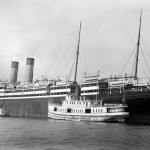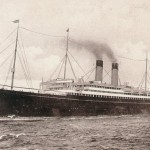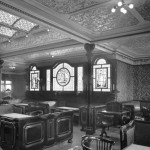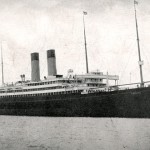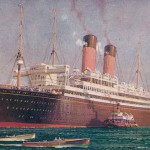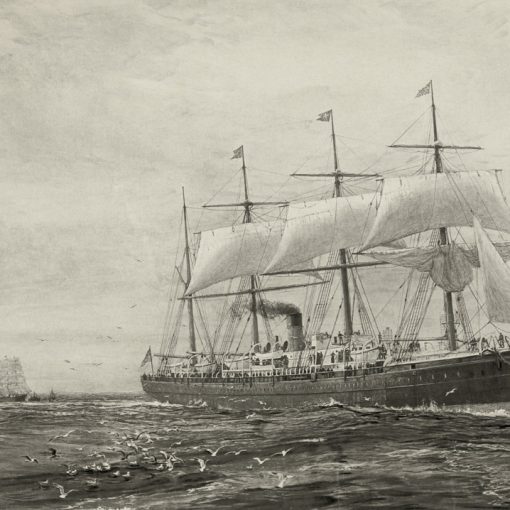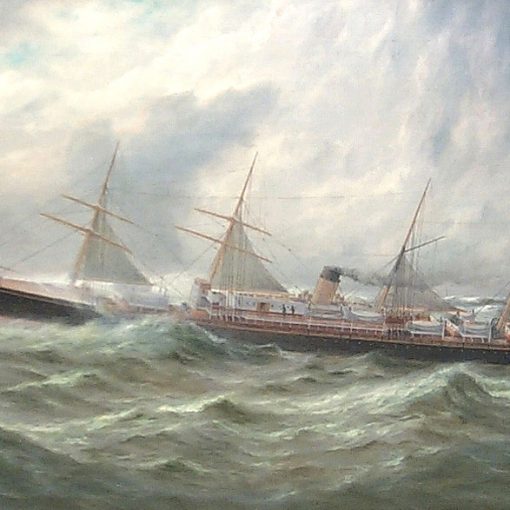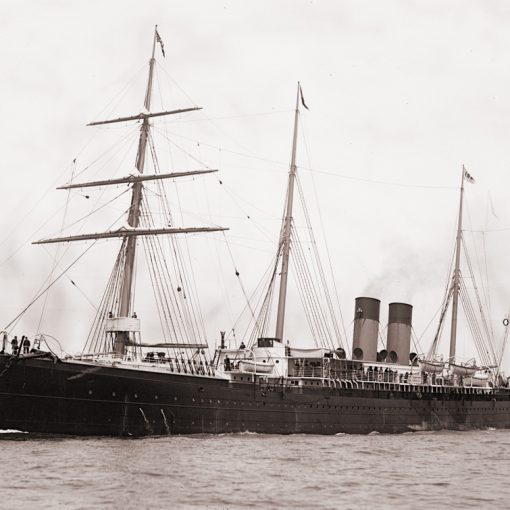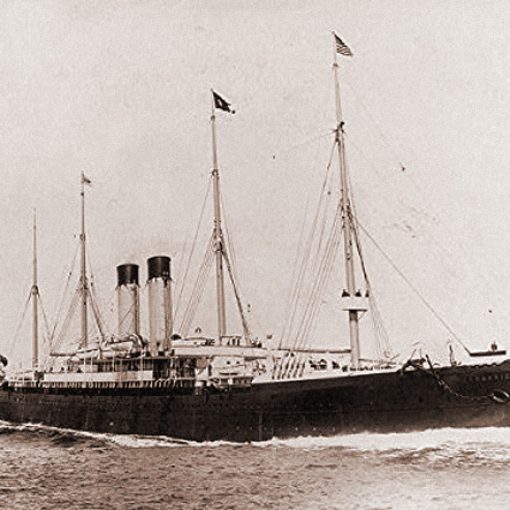1907 – 1934
The White Star Line had started their project in building four large vessels for the North Atlantic passenger trade route in 1901, when they completed the 21,000-tonner Celtic. The Celtic would have been a lone vessel if not Thomas Henry Ismay had died in 1899. The Celtic had been ordered by him, but after his death, his son Joseph Bruce Ismay decided that the Celtic should have three sisters, making the Celtic into a quartet. The second of the sisters appeared in 1903, and she was named Cedric. Having a net tonnage 71 tons more than Celtic, she took the title of being the largest ship in the world from her sister. In 1904, the third vessel came. She was the Baltic, and with a length that surpassed the 705-feet Oceanic’s, the Baltic became the first vessel in the world that could claim to be both the longest and largest since the Great Eastern.
The fourth vessel was ordered already in 1903. Why the ship did not appear until 1907, can be thought of as a mystery. Several unlikely theories about the slow progress’ reasons have come up during the years, but the real reason of the affair is probably that White Star felt that they were in no hurry in completing their latest ship. One of the reasons of the ‘no hurry’-policy was certainly that Bruce Ismay knew that the Cunard Line was constructing two 32,000-tonners, namely the Lusitania and the Mauretania. The really interesting thing for the White Star Line was now to surpass Cunard’s new leviathans.
The new ship customarily continued the White Star Line’s name-policy and was given the -ic ending name Adriatic. The work on the Adriatic and Cunard’s Mauretania went on rather simultaneously in 1906, and on September 20, the same year both vessels were launched. It is extraordinary that both the White Star Line’s and the Cunard Line’s largest vessels were launched the same day.
The Adriatic was the last of the Big Four-class, but differed in some respects from the others. The major difference was that the Adriatic was fitted with an indoor swimming pool and a Turkish bath. She was the very first vessel in the world that had such a thing on board. Some other things that made her different from her sisters was that she had derrick posts between the bridge and the foremast, and that both sets of island boats aft were on two tier decks.
In 1907, the Adriatic was completed, and on May 8, she set out on her maiden voyage between Liverpool and New York. During the voyage, White Star changed their main home port to Southampton, and when the Adriatic returned from her maiden voyage, she did not return to Liverpool, but to Southampton. On June 5, the Adriatic replaced the Celtic on the Southampton-New York service since the Celtic had been chartered by the Americans for a short while. On her Southampton-New York route, the Adriatic’s running mates became the Teutonic, the Majestic and the Oceanic.
In June 1911, the fight back from White Star towards Cunard came. The 45,000-tonner Olympic began to serve the company. The new vessel exceeded the Cunard-duo from 1907 in tonnage, not in speed, but since the Olympic would have a service speed of 21 knots she was the fastest in her company. Being the flag ship in the White Star Line, the Olympic replaced the Adriatic who was returned to her somewhat unfinished Liverpool-New York service.
In 1912, the White Star Line had completed the second of the Olympic-class liners; the Titanic. The Titanic set out on her maiden voyage in April, but sank with a terrible loss of life, after having encountered ice, before reaching New York. The Adriatic was in New York shortly after the disaster had occurred, and Bruce Ismay, who had been on the Titanic and survived, returned to England on board her. The results of the disaster were many. One was that no ship was ever again called ‘unsinkable’, as for example the Adriatic had been. Another was that every ship was fitted with an adequate number of lifeboats on board. The Adriatic returned to service shortly after a minor overhaul concerning additional lifeboats.
By the start of the First World War in 1914, the Adriatic was still on the Liverpool route. She was decided to remain in passenger service just as the Lusitania. In 1917 and a year since, the Adriatic operated under the Liner Requisition Scheme. Sometimes she carried oil in her double bottom, in order to use every possible space for cargo.
After the war, in 1919, the Adriatic was reconditioned, and among other things her forward promenade deck was glassed in, because of water entering the promenade areas in rough weather. The same year a music band consisting of five members calling themselves the ‘Original Dixieland Jazzband’ arrived at Liverpool on board the Adriatic. That was the first time that Jazz music came to Britain; no one liked their style very much but ever since, the Jazz reputation has bettered in the U.K. In September, the Adriatic resumed her Southampton-New York service, only to go back to the Liverpool run in 1922, where all of her sisters were based. At Liverpool, five people were killed by a reserve coal bunker explosion, in August. One year later the Adriatic’s route changed somewhat when a call at Boston was introduced.
Almost all other large liners that had been coal-fired before had by now been converted into oil burning ships. The Adriatic was never given the opportunity, but in spite of her somewhat slower coal-burning appearance, she made her fastest crossing ever in seven days and six minutes in 1925. The next year, the Adriatic was considered having reached an age that would not make her profitable during winter time, and she was sent off cruising during the off-season. In 1928, the vessel was converted into a Cabin-class ship. She made her first sailing as such on April 28, and during the off-seasons she made cruisings to the Mediterranean. In 1929, all work during the winter months was suspended for the Adriatic. In the future she would only serve in the summer. The regular transatlantic service was also reduced for the ship and from 1933, the only service the Adriatic could stand for was summer cruising from Liverpool.
The Depression had hit hard on both the White Star Line and the Cunard Line. In 1934, the old rivals were forced by the Government to merge. The Adriatic was the only ship of the Big Four still alive by then and she was only used for some cruisings in 1934, before she was sold for £48,000 to Japanese scrappers situated in Osaka. The Adriatic left Liverpool for her last time on December 19. Some three months later she was in the hands of the Japanese scrappers who would take the former White Star Line’s once largest ship in for final demolition.
Specifications
- 729 feet (222.7 m) long
- 75.6 feet (23.1 m) wide
- 24,541 gross tons
- Steam quadruple-expansion engines powering two propellers
- 17 knot service speed
- Passenger capacity of 2,875 people

